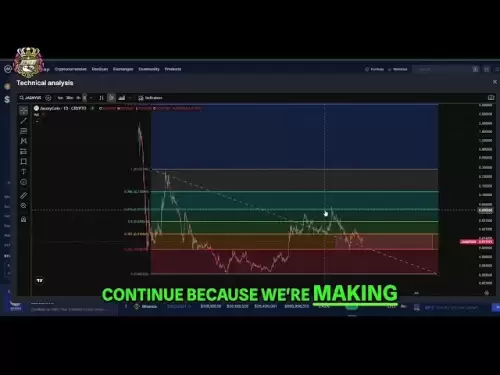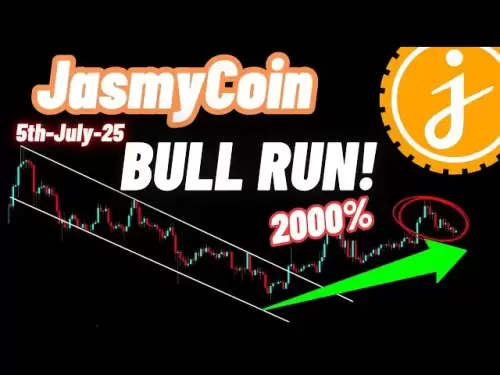-
 Bitcoin
Bitcoin $108,017.2353
-0.81% -
 Ethereum
Ethereum $2,512.4118
-1.58% -
 Tether USDt
Tether USDt $1.0002
-0.03% -
 XRP
XRP $2.2174
-1.03% -
 BNB
BNB $654.8304
-0.79% -
 Solana
Solana $147.9384
-1.76% -
 USDC
USDC $1.0000
-0.01% -
 TRON
TRON $0.2841
-0.76% -
 Dogecoin
Dogecoin $0.1636
-2.09% -
 Cardano
Cardano $0.5726
-1.72% -
 Hyperliquid
Hyperliquid $39.1934
1.09% -
 Sui
Sui $2.9091
-0.59% -
 Bitcoin Cash
Bitcoin Cash $482.1305
0.00% -
 Chainlink
Chainlink $13.1729
-1.54% -
 UNUS SED LEO
UNUS SED LEO $9.0243
-0.18% -
 Avalanche
Avalanche $17.8018
-1.90% -
 Stellar
Stellar $0.2363
-1.69% -
 Toncoin
Toncoin $2.7388
-3.03% -
 Shiba Inu
Shiba Inu $0.0...01141
-1.71% -
 Litecoin
Litecoin $86.3646
-1.98% -
 Hedera
Hedera $0.1546
-0.80% -
 Monero
Monero $311.8554
-1.96% -
 Dai
Dai $1.0000
-0.01% -
 Polkadot
Polkadot $3.3473
-2.69% -
 Ethena USDe
Ethena USDe $1.0001
-0.01% -
 Bitget Token
Bitget Token $4.3982
-1.56% -
 Uniswap
Uniswap $6.9541
-5.35% -
 Aave
Aave $271.7716
0.96% -
 Pepe
Pepe $0.0...09662
-1.44% -
 Pi
Pi $0.4609
-4.93%
How to conduct cross-chain transactions on Binance? Which chains are supported?
Binance supports cross-chain transactions, allowing users to transfer assets like Bitcoin and Ethereum between networks like BEP20, ERC20, and more for enhanced flexibility.
Apr 28, 2025 at 05:00 am

Cross-chain transactions on Binance allow users to transfer assets between different blockchain networks seamlessly. This feature enhances the flexibility and efficiency of managing digital assets across various ecosystems. In this article, we will explore how to conduct cross-chain transactions on Binance and which chains are supported by the platform.
Understanding Cross-Chain Transactions
Cross-chain transactions involve moving assets from one blockchain to another. This is crucial for users who wish to take advantage of different features and opportunities available on various blockchains. Binance supports cross-chain transactions to facilitate this process, enabling users to transfer assets like Bitcoin, Ethereum, and BNB between supported networks without the need for external bridges or third-party services.
Supported Chains on Binance
Binance supports a variety of chains for cross-chain transactions. Some of the most prominent chains include:
- Binance Chain (BEP2): The native blockchain of Binance, optimized for fast and low-cost transactions.
- Binance Smart Chain (BEP20): A blockchain that supports smart contracts and decentralized applications, offering compatibility with Ethereum's ecosystem.
- Ethereum (ERC20): The leading blockchain for smart contracts and decentralized applications, widely used in the DeFi space.
- Bitcoin (BTC): The original cryptocurrency, primarily used for value storage and transactions.
- Tron (TRC20): A blockchain focused on high throughput and low fees, popular for stablecoin transactions.
These chains cover a broad spectrum of use cases, from high-speed transactions to smart contract execution, ensuring that users can move their assets freely between ecosystems.
Preparing for a Cross-Chain Transaction
Before initiating a cross-chain transaction on Binance, it's essential to prepare adequately. Here are the steps to ensure a smooth process:
- Ensure Sufficient Balance: Make sure you have enough balance in the asset you wish to transfer. Consider transaction fees as well.
- Verify Network Compatibility: Confirm that the asset you want to transfer is supported on both the source and destination chains.
- Understand the Fees: Familiarize yourself with the fees associated with cross-chain transfers. These can vary depending on the asset and the networks involved.
How to Conduct a Cross-Chain Transaction on Binance
To conduct a cross-chain transaction on Binance, follow these detailed steps:
- Log into Your Binance Account: Access your Binance account using your credentials.
- Navigate to Wallet: Click on the "Wallet" option in the top navigation bar, then select "Overview".
- Select the Asset: Choose the asset you want to transfer from the list of available cryptocurrencies.
- Initiate Withdrawal: Click on the "Withdraw" button next to the chosen asset.
- Choose the Destination Chain: In the withdrawal form, select the destination chain from the dropdown menu. For example, if you are transferring from BEP20 to ERC20, choose "ERC20" as the destination.
- Enter the Recipient Address: Input the address on the destination chain where you want to send the asset. Ensure this address is correct, as transactions cannot be reversed.
- Specify the Amount: Enter the amount of the asset you wish to transfer. Remember to account for the network fee.
- Review and Confirm: Double-check all the details, including the recipient address, the amount, and the destination chain. Once satisfied, click "Submit".
- Authorize the Transaction: Follow the on-screen prompts to complete the two-factor authentication (2FA) process. This may involve entering a code sent to your mobile device or using an authenticator app.
- Wait for Confirmation: After submitting the transaction, it will be processed by Binance. The time it takes for the transaction to be confirmed can vary depending on the network congestion and the specific chains involved.
Monitoring and Verifying the Transaction
After initiating a cross-chain transaction, it's important to monitor its progress and verify its completion. Here's how you can do it:
- Check Transaction Status: Use the "Transaction History" section in your Binance wallet to track the status of your cross-chain transfer.
- Verify on Block Explorers: For added assurance, you can use block explorers specific to the source and destination chains to confirm the transaction. For example, use BscScan for Binance Smart Chain transactions or Etherscan for Ethereum transactions.
- Ensure Funds Arrive: Once the transaction is confirmed, check your wallet on the destination chain to ensure the funds have arrived. This may take some time depending on network conditions.
Troubleshooting Common Issues
Sometimes, cross-chain transactions may encounter issues. Here are some common problems and how to address them:
- Transaction Pending: If your transaction remains pending for an extended period, check the network status of both the source and destination chains. High congestion can cause delays.
- Incorrect Recipient Address: If you enter an incorrect address, the transaction cannot be reversed. Always double-check the recipient address before confirming.
- Insufficient Balance: Ensure you have enough balance to cover both the transfer amount and the network fees. If not, the transaction will fail.
Frequently Asked Questions
Q: Can I cancel a cross-chain transaction after it has been initiated?
A: Once a cross-chain transaction is initiated and confirmed on Binance, it cannot be canceled. It's crucial to double-check all details before submitting the transaction.
Q: Are there any limits on the amount I can transfer in a cross-chain transaction?
A: Binance may impose limits on cross-chain transactions based on the asset and the networks involved. These limits can vary, so it's advisable to check the specific limits for your chosen asset before proceeding.
Q: How long does a cross-chain transaction typically take on Binance?
A: The duration of a cross-chain transaction can vary depending on network congestion and the specific chains involved. Generally, transactions can take anywhere from a few minutes to several hours.
Q: Is it safe to conduct cross-chain transactions on Binance?
A: Binance employs robust security measures to ensure the safety of cross-chain transactions. However, users should always double-check recipient addresses and be aware of network fees to avoid potential issues.
Disclaimer:info@kdj.com
The information provided is not trading advice. kdj.com does not assume any responsibility for any investments made based on the information provided in this article. Cryptocurrencies are highly volatile and it is highly recommended that you invest with caution after thorough research!
If you believe that the content used on this website infringes your copyright, please contact us immediately (info@kdj.com) and we will delete it promptly.
- PEPE, BONK, and Remittix: Meme Coins Meet Real-World Utility
- 2025-07-06 02:30:13
- Score Big This Weekend with BetMGM Bonus Code for MLB Games
- 2025-07-06 02:50:13
- PENGU Token's eToro Debut and Weekly Surge: What's Driving the Hype?
- 2025-07-06 02:30:13
- Singapore's Crypto Crackdown: Laundering, Licenses, and Lessons
- 2025-07-06 02:50:13
- Royal Mint Coins: Unearthing the Rarest Queen Elizabeth II Treasures
- 2025-07-06 00:30:12
- BlockDAG, SEI, and HYPE: Decoding the Crypto Buzz in the Big Apple
- 2025-07-06 00:50:13
Related knowledge
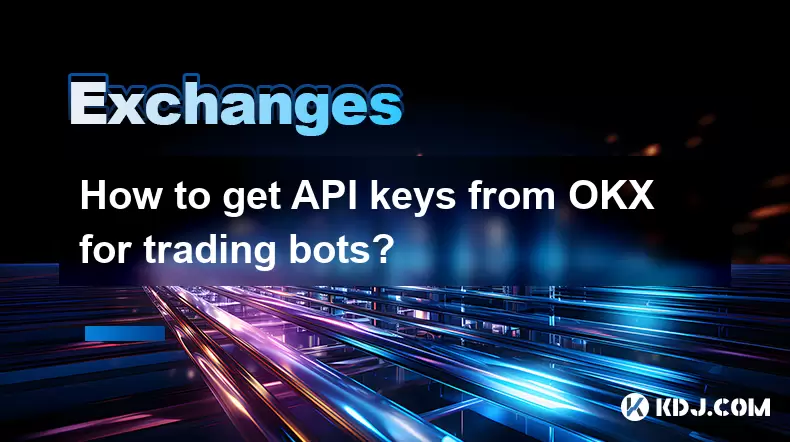
How to get API keys from OKX for trading bots?
Jul 03,2025 at 07:07am
Understanding API Keys on OKXTo interact with the OKX exchange programmatically, especially for building or running trading bots, you need to obtain an API key. An API (Application Programming Interface) key acts as a secure token that allows your bot to communicate with the exchange's servers. On OKX, these keys come with customizable permissions such ...
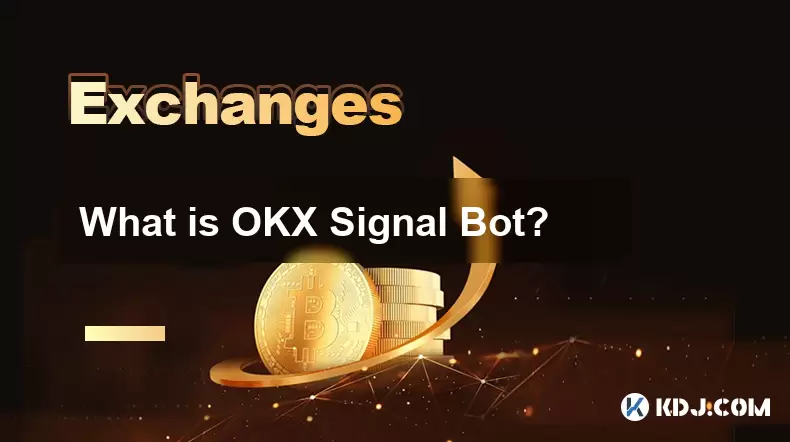
What is OKX Signal Bot?
Jul 02,2025 at 11:01pm
Understanding the Basics of OKX Signal BotThe OKX Signal Bot is a feature within the OKX ecosystem that provides users with automated trading signals and execution capabilities. Designed for both novice and experienced traders, this bot helps identify potential trading opportunities by analyzing market trends, technical indicators, and historical data. ...
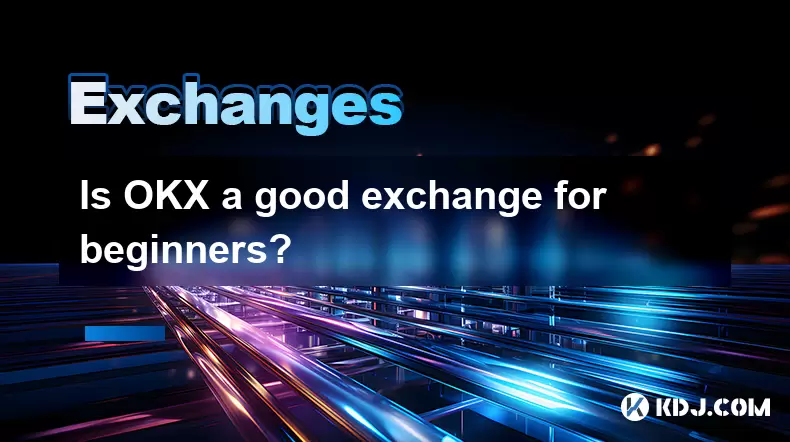
Is OKX a good exchange for beginners?
Jul 03,2025 at 05:00pm
What Is OKX and Why Is It Popular?OKX is one of the leading cryptocurrency exchanges globally, known for its robust trading infrastructure and a wide variety of digital assets available for trading. It supports over 300 cryptocurrencies, including major ones like Bitcoin (BTC), Ethereum (ETH), and Solana (SOL). The platform has gained popularity not onl...
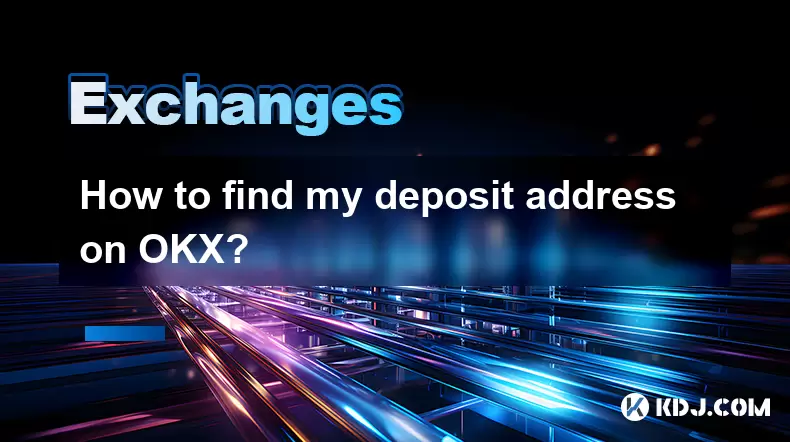
How to find my deposit address on OKX?
Jul 06,2025 at 02:28am
What is a Deposit Address on OKX?A deposit address on OKX is a unique alphanumeric identifier that allows users to receive cryptocurrencies into their OKX wallet. Each cryptocurrency has its own distinct deposit address, and using the correct one is crucial to ensure funds are received properly. If you're looking to transfer digital assets from another ...
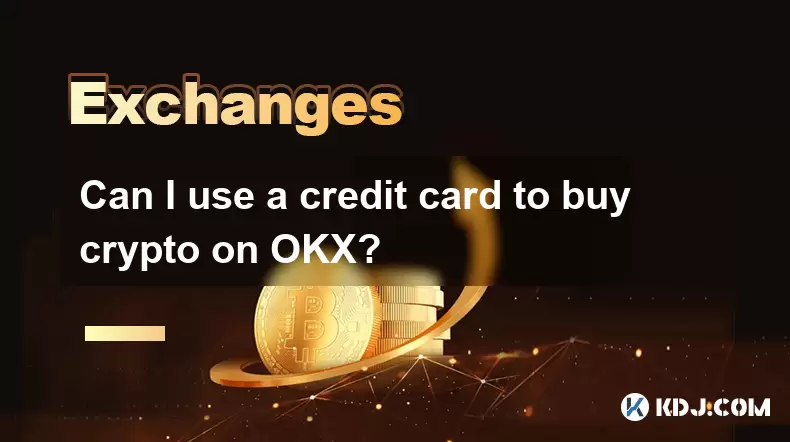
Can I use a credit card to buy crypto on OKX?
Jul 04,2025 at 04:28am
Understanding OKX and Credit Card PaymentsOKX is one of the leading cryptocurrency exchanges globally, offering a wide range of services including spot trading, derivatives, staking, and more. Users often wonder whether they can use a credit card to buy crypto on OKX, especially if they are new to the platform or looking for quick ways to enter the mark...
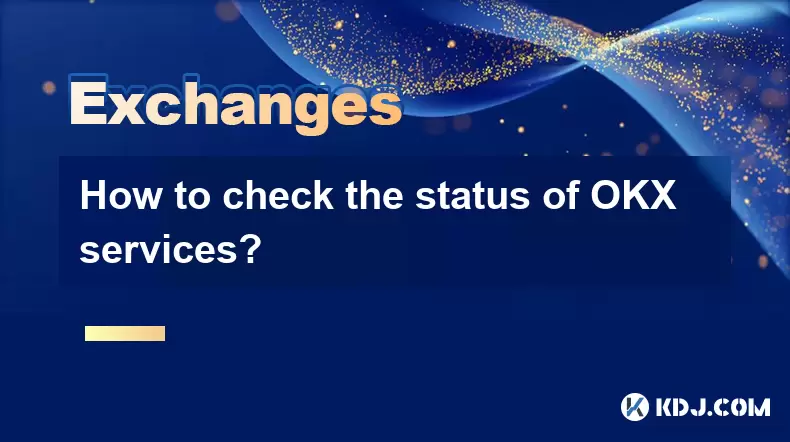
How to check the status of OKX services?
Jul 02,2025 at 11:14pm
What is OKX, and Why Checking Service Status Matters?OKX is one of the world’s leading cryptocurrency exchanges, offering services such as spot trading, futures trading, staking, and more. With millions of users relying on its platform for daily transactions, it's crucial to know how to check the status of OKX services. Downtime or maintenance can affec...

How to get API keys from OKX for trading bots?
Jul 03,2025 at 07:07am
Understanding API Keys on OKXTo interact with the OKX exchange programmatically, especially for building or running trading bots, you need to obtain an API key. An API (Application Programming Interface) key acts as a secure token that allows your bot to communicate with the exchange's servers. On OKX, these keys come with customizable permissions such ...

What is OKX Signal Bot?
Jul 02,2025 at 11:01pm
Understanding the Basics of OKX Signal BotThe OKX Signal Bot is a feature within the OKX ecosystem that provides users with automated trading signals and execution capabilities. Designed for both novice and experienced traders, this bot helps identify potential trading opportunities by analyzing market trends, technical indicators, and historical data. ...

Is OKX a good exchange for beginners?
Jul 03,2025 at 05:00pm
What Is OKX and Why Is It Popular?OKX is one of the leading cryptocurrency exchanges globally, known for its robust trading infrastructure and a wide variety of digital assets available for trading. It supports over 300 cryptocurrencies, including major ones like Bitcoin (BTC), Ethereum (ETH), and Solana (SOL). The platform has gained popularity not onl...

How to find my deposit address on OKX?
Jul 06,2025 at 02:28am
What is a Deposit Address on OKX?A deposit address on OKX is a unique alphanumeric identifier that allows users to receive cryptocurrencies into their OKX wallet. Each cryptocurrency has its own distinct deposit address, and using the correct one is crucial to ensure funds are received properly. If you're looking to transfer digital assets from another ...

Can I use a credit card to buy crypto on OKX?
Jul 04,2025 at 04:28am
Understanding OKX and Credit Card PaymentsOKX is one of the leading cryptocurrency exchanges globally, offering a wide range of services including spot trading, derivatives, staking, and more. Users often wonder whether they can use a credit card to buy crypto on OKX, especially if they are new to the platform or looking for quick ways to enter the mark...

How to check the status of OKX services?
Jul 02,2025 at 11:14pm
What is OKX, and Why Checking Service Status Matters?OKX is one of the world’s leading cryptocurrency exchanges, offering services such as spot trading, futures trading, staking, and more. With millions of users relying on its platform for daily transactions, it's crucial to know how to check the status of OKX services. Downtime or maintenance can affec...
See all articles





















